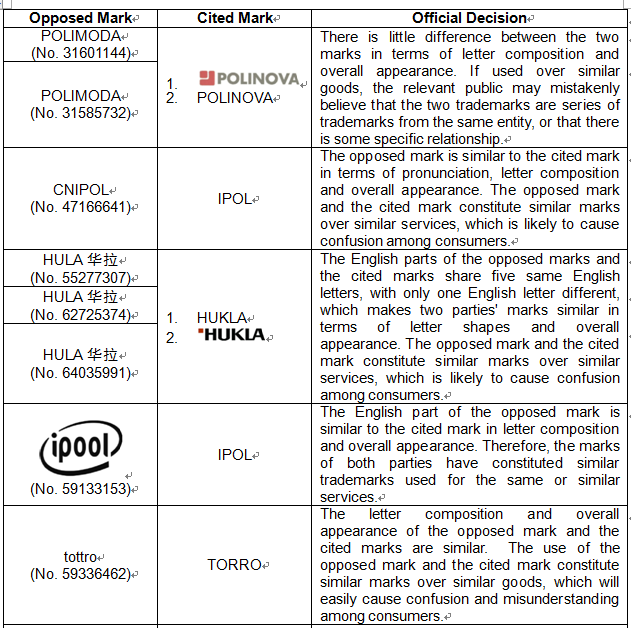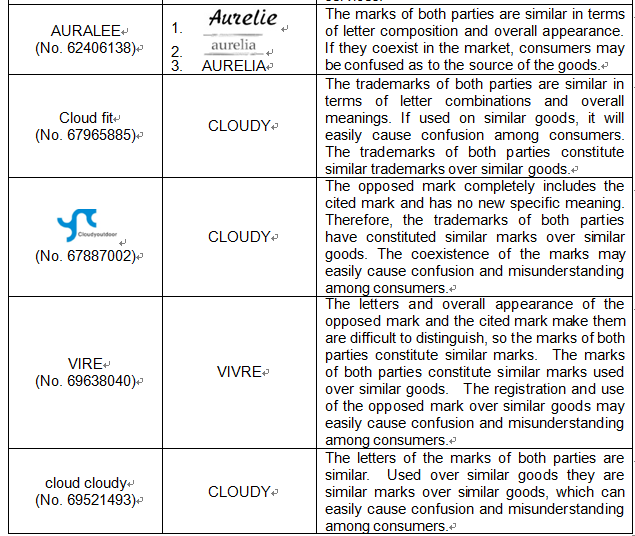Article 30 of Trademark Law stipulates that "where a trademark application does not comply with the relevant provisions of this Law or is identical or similar to a registered or preliminarily approved mark used in connection with the same or similar goods, it shall be refused by the Trademark Office and the mark shall not be published."
This regulation consists of two parts -- first, any mark applied for registration that does not comply with the relevant provisions of the Trademark Law will be rejected by the CNIPA; second, any mark applied which are identical / similar to prior registered or preliminarily approved marks over the same or similar goods will be rejected by the CNIPA. The first part of this article likes a catch-all clause. If a trademark application violates specific legal provisions of the Law, the specific provisions should be cited to reject the application and this provision will not be applied.
In the CNIPA's refusal notification, we often see the CNIPA citing Article 30 to reject an application. In fact, this clause is also often cited by opponents in opposition cases. However, the CNIPA does not often deem that the opposed marks are similar to cited marks. In the past, the CNIPA seemed to quote Article 4 and Articles 7 together with 30 (the first part) more often. After China Trademark Law increased its crackdown on trademarks filed in bad faith, the number of trademarks registered in bad faith has dropped significantly. Therefore, in future opposition cases, we must actually focus more on judging the degree of similarity between the two parties' marks, trying to successfully oppose marks by the second half of Article 30 of Trademark Law.
This article lists some of the opposition cases that the author has handled. In these cases, the CNIPA deemed two parties' marks are similar and then supported the opponent's claim. This has certain reference significance in practice:


The opponent in the above case is a company that is not very well-known in mainland China, and the cited marks are not well-known in China either. Through the opponent's search, the opposed parties have no obvious bad faith, so in this situation, the detailed analysis of the high degree of similarity between the opposed marks and the cited marks is the key to the success of such cases.